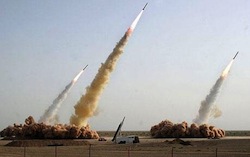The Steps and Timeline for an Iranian Nuclear Weapon
July 2, 2010
Featured Image
Today's top nuclear policy stories, with excerpts in bullet form.
Stories we're following today, Friday, July 2, 2010:
How Iran Can Build A Bomb - Joe Cirincione and Elise Connor in Foreign Policy [link]
- It is much harder to build a deliverable weapon than most pundits assume.
- The best expert assessments indicate that it would actually take Iran about three to five years to develop a nuclear bomb.
- With Iran's nuclear timeline so fluid, it's crucial not to react in a panicked way based on a false sense of urgency. A military response in particular could have grave consequences, while doing nothing to provide a long-term solution to the problem.
- Like the boy who cried wolf, those pundits might eventually be right. For now, however, Iran has a ways to go -- and keeping that in mind is the best way to develop a measured response to the Islamic Republic's nuclear ambitions.
Obama Signs Into Law Tighter Sanctions on Iran - The New York Times [link]
- President Obama on Thursday signed into law new unilateral American sanctions on Iran that go beyond the penalties imposed by the United Nations last month as he tries to escalate the pressure on Tehran to halt its nuclear enrichment program.
- “With these sanctions, along with others, we are striking at the heart of the Iranian government’s ability to fund and develop its nuclear program,” Mr. Obama said at a bill-signing ceremony in the East Room.
- A New York Times analysis in March found that the federal government had awarded more than $107 billion in contract payments, grants and other benefits over the past decade to foreign and multinational American companies while they were doing business in Iran.
- The law produced one of the few moments of consensus in Washington. Joining Mr. Obama on stage at the White House was Representative Eric Cantor of Virginia, the second-ranking House Republican.
Iran Sanctions: Where We Go From Here - Stuart Eizenstat in The Wall Street Journal [link]
- The overwhelming international support for the new U.N. Security Council sanctions against Iran represents one of the most tangible successes of the Obama administration's foreign policy.
- The key test moves to the EU. It must put aside its traditional commercial relations with Iran and take firm action to prevent Tehran from going nuclear.
- The goal of sanctions against Iran is to make the cost of continuing its nuclear program higher than the benefits. Shutting down the financial sources the regime uses to support its nuclear program is the most effective way to change its behavior.
- Harmonized transatlantic sanctions led by the U.S. and EU with the support of their allies offers the last, best chance of avoiding two unpalatable alternatives: Bombing Iran's nuclear infrastructure, or conceding that Iran will become a nuclear weapons state.
How U.S. Spies Straight Wreck Iran's Nuke Program - Wired's Danger Room Blog [link]
- You know that an underground supply-chain network exists to get spare parts suitable for illicit uranium enrichment to aspiring nuclear powers. You don’t know how extensive it is.
- If you’re U.S. intelligence and the target is Iran’s nuclear program, you start introducing some crappy supply into the chain. Welcome to the CIA’s world of nuclear chaos.
- Along with fellow masters of chaos in Israel’s Mossad, operatives and intelligence assets have introduced defective vacuum pumps and decay-inducing chemical sprays to keep Iran’s centrifuges from properly separating uranium isotopes into bomb-ready material.
- The history of successful non-proliferation efforts is often a history of kicking the nuclear can down the diplomatic road, until new leadership comes to the conclusion that it has more to gain by abandoning rogue nuclear activity than by acquiring a bomb.



